The Caspian Sea, the world’s largest inland body of water, the largest landlocked watershed, is one of the wonders of the Middle East. This self-sufficient lake has no access to open waters and is just connected to the Black Sea via a man-made canal. It lies to the east of the Caucasus Mountains and to the west of the vast steppe of Central Asia. The sea’s name derives from the ancient Kaspi peoples, who once lived in Transcaucasia to the west.
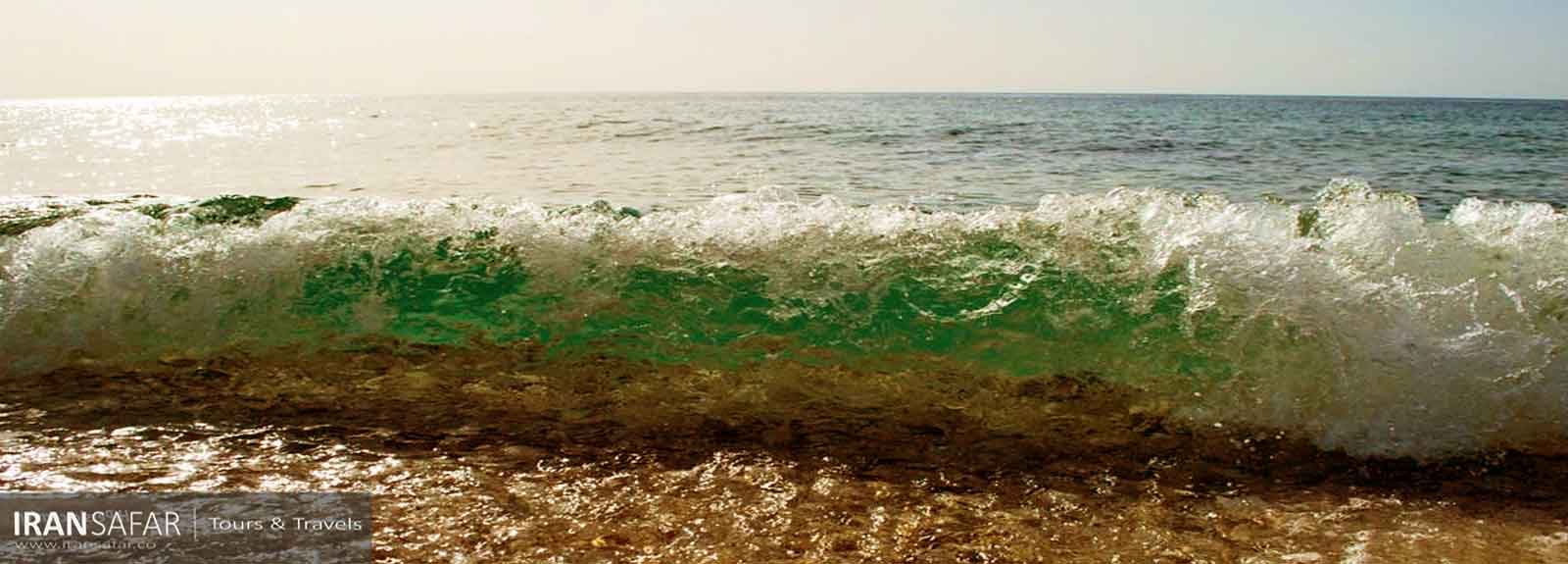
All about the Caspian Sea
The Caspian Sea is located in northern Iran and is bounded on the north by Russia, on the west by Russia and the Republic of Azerbaijan, on the east by the Republic of Turkmenistan and Kazakhstan. Locally called Khazar in Iran, Caspian is confined to land and is not directly connected to any of the world’s open waters. In recent years, the Caspian Sea has been connected to the Black Sea via the Volga-Don Canal.
The Caspian Sea covers an area of 600,384 square Km (one-fourth of Iran’s area) and its length is about 1280 Km. The largest lake in the world is 202 to 554 km wide and its widest area is located near the southern coast. The deepest point of the Caspian Sea is 980 meters deep and its water volume is 790 thousand cubic Km.
Fishery in the Caspian Sea
The Caspian Sea has 740 km of coastline in Iran and 1894 km in Azerbaijan, 815 Km in Russia, 800 Km in Kazakhstan and 1789 Km in Turkmenistan. Undoubtedly, the Caspian Sea plays a very important role in the region and the arid climate of Iran and serves as a very important platform for energy transfer. Annually, 600,000 metric tons of fish is harvested from the Caspian Sea, which plays a significant role in the region’s financial turnover and economy.
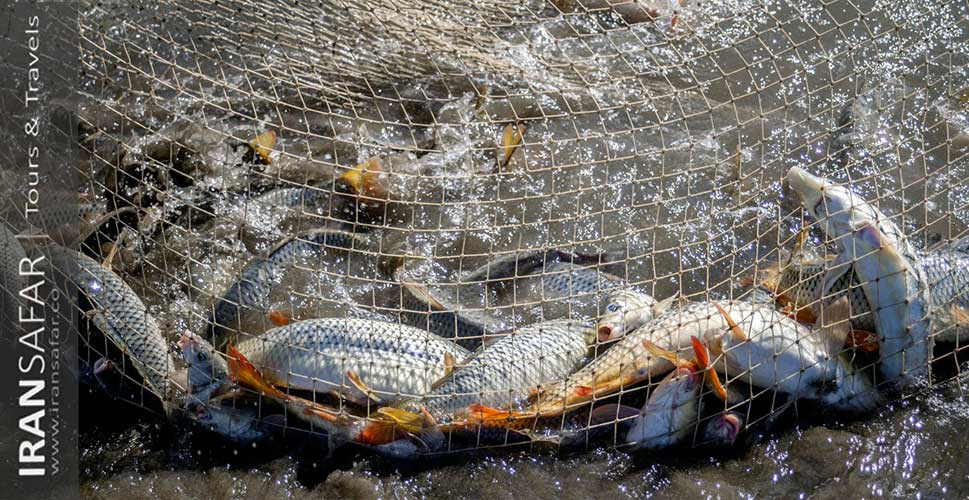
The Caspian Caviar
The Caspian long has been famous for its sturgeon, a fish prized for its caviar, and the sea accounts for the great bulk of the world catch. If you know anything about caviar, you’ve probably heard the name of the Caspian Sea. The finest Caspian Caviar is Beluga . Beluga caviar comes from the Beluga sturgeon (hence the name) and most of these fish live in the Caspian Sea. In fact, the Caspian Sea provides 90 percent of all world’s caviar. Beluga sturgeon are the third most massive living species of bony fish in the world and the biggest freshwater fish. They can live for 120 years and weigh over 1,000 pounds. These are huge fish.
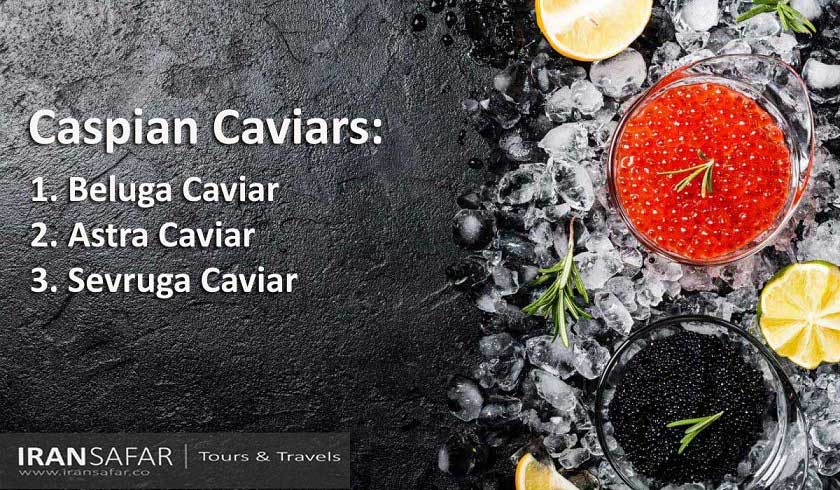
Beluga caviar is caviar consisting of the roe of the beluga sturgeon Huso huso. The fish can be found primarily in the Caspian Sea and also in the Black Sea basin and occasionally in the Adriatic Sea. The Caspian Sea is about a third less salty than regular seas, and this level of salinity seems to suit the beluga sturgeon. Unfortunately, over-fishing and poaching has endangered beluga endangered Beluga sturgeon which helps explain the high price of the caviar. Beluga caviar is the most expensive type of caviar with market prices ranging from $7,000 to $10,000 per Kg.
Rivers of the Caspian region
With their combined annual flow, Volga, Ural, and Terek, The major rivers that empty into the northern Caspian, account for about 88 percent of all river water entering the sea. The Sulak, Samur, Kura, and a number of smaller rivers flow in on the western shore of the middle and southern Caspian, contributing about 7 percent of the total flow into the sea. The remainder comes in from the rivers of the southern, Iranian shore such as Atrak (Atrek), Aras, Sefid rood, Haraz Rivers. The sea’s arid eastern shore is notable for a complete lack of permanent streams.
Climate of the Caspian Sea
The northern Caspian enjoys a moderately continental climate zone, while the middle and south part of the sea, with Iran, Turkmenistan and Azerbaijan is mountainous and much warmer. The southwest is touched by subtropical influences, and that remarkable variety is completed by the desert climate prevailing on the eastern shore. The most precipitation is in the eastern parts, primarily in the southeast. The average rainfall on most shores of the Caspian Sea is about 300 mm per year and only in the coasts of Iran and parts of southern Azerbaijan has an exceptionally humid climate with rainfall of about 700 to 1700 mm.
Caspian Sea Oil industry history
The first documented report on Caspian hydrocarbon resources dates back to the thirteenth century. Oil was officially extracted from Caspian region lands in 1869 and from Baku water in 1949, and so far 21,000 wells have been drilled in exploration areas (land and sea). Apart from the North Caspian and Central Caspian oil fields, the southern part of Caspian Sea is also one of the main sources of exploration and production of oil and gas.
Development and exploitation of oil and gas fields in the Caspian Sea dates back to 1949, and according to the official sources of the Republic of Azerbaijan, the oil industry of this country extracted oil and gas at this sea for the first time in the world, of course Azerbaijan was a part of USSR at that time.
Development and exploitation of oil and gas fields in the Caspian Sea dates back to 1949, and according to the official sources of the Republic of Azerbaijan, the Azerbaijanian oil industry started to extract oil and gas at Caspian Sea for the first time in the world. In 1949, with the discovery of the largest energy field “Neft Dashlari” located 90 km east of Baku in the Caspian Sea, the foundation was laid for the development and exploitation of the oil and gas resources of this region. Following this action, the development and operation of other fields such as “Gorgan Deniz”, “Pirollahi” and “Jilvo Adasi” began in the Caspian Sea and some other actions were also taken in order to create the necessary infrastructure for the development of other energy sources in the sea.
Only in the 1980s, the Republic of Azerbaijan, using relatively advanced drilling equipment, including floating platforms, succeeded in conducting geological explorations at a depth of 200 to 350 meters, as a result of which several energy fields with significant oil reserves, including” “Azari”, “Cheragh” and “Gunshli” were discovered and these fields are currently being developed in cooperation with transnational oil companies.
According to 2013 statistics, the Republic of Azerbaijan extracts 873,260 barrels of oil per day from the Caspian Sea, while Iran’s extraction from this huge and valuable resource is zero.
Caspian Sea Legal Status
Nearly three decades after the collapse of the Soviet Union and the discovery of three new littoral states for the Caspian, the Convention on the New Legal Status of the Caspian Sea was finally signed by the presidents of Iran, Russia, Azerbaijan, Kazakhstan and Turkmenistan. The signed text is a result of 26 years of negotiations on the legal status of the Caspian Sea, which is the basis of subsequent decisions and can be referred to as the Constitution of the Caspian Sea.
The new Caspian Sea Legal Status Convention has not entered into any delimitation of water borders and boundaries, and has left this issue to bilateral dialogue between countries. All Caspian states have defined their national parts and share of Caspian waters by bilateral agreements. Iran has always rejected this method and has not yet finalized its maritime border with its two neighbors in the Caspian Sea, the Republic of Azerbaijan and Turkmenistan.
Caspian Sea Map
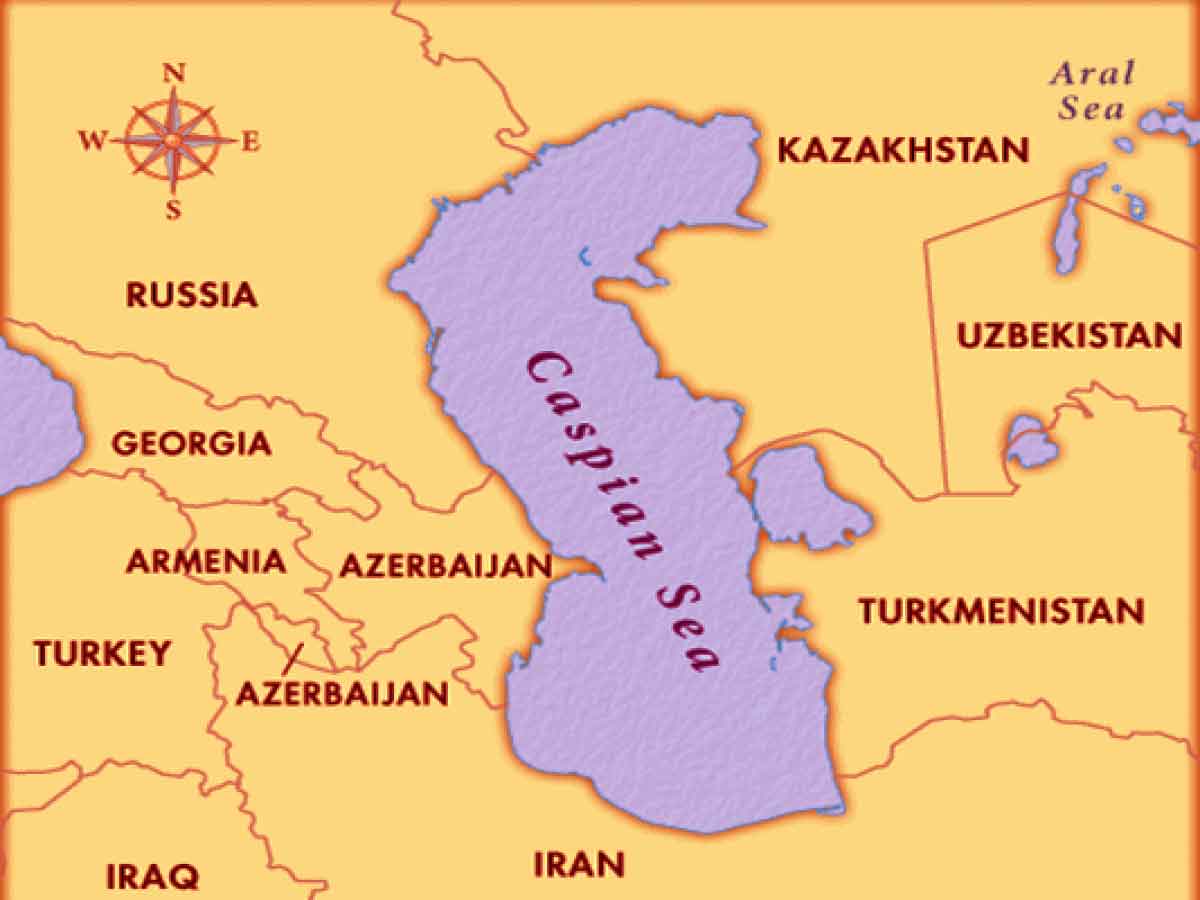
Map is showing the Caspian Sea, an inland sea at the crossroads of Europe and Asia that is situated about 500 km east of the Black Sea, between southeastern Europe and Western Asia, east of the Caucasus Mountains, south of the vast Eurasian Steppe, and west of the Karakum and Kyzylkum Deserts of Central Asia. Five countries have a shoreline at the sea, Iran and four former Soviet republics (until 1991), Russia, Azerbaijan, Turkmenistan, and Kazakhstan.
20 Facts about the Caspian Sea
1In the past, the Caspian Sea was part of the Tethys Sea that connected the Pacific Ocean to the Atlantic Ocean. From 60 million years ago, the connection between the Caspian Sea and the Pacific and Atlantic Oceans gradually disappeared. 2Caspian is a term used in Western and Hebrew to name the North Sea of Iran. The Caspis were a white skinned tribe that lived from the second millennium BCE to the Sassanid era in the Caspian Sea region. 3The missing book “Khotai Namag” is the oldest written source in which the name of the Caspian Sea is mentioned for the first time. In this source, the name “Sea of Gilan” has been used to name this sea. 4Some written sources state that the “Khazar” tribes were an ethnic group that repeatedly intended to invade Iran’s borders, but the Sassanid kings cut off their hand. Some believe that the choice of the name Khazar for the North Sea of Iran is wrong, and in fact the Khazar Tribes intended to usurp this land. 5The Caspian Sea is home to more than 400 species of fish most of which are unique and can not be found anywhere in the world except the Caspian Sea. 6The Caspian Sea has seals.
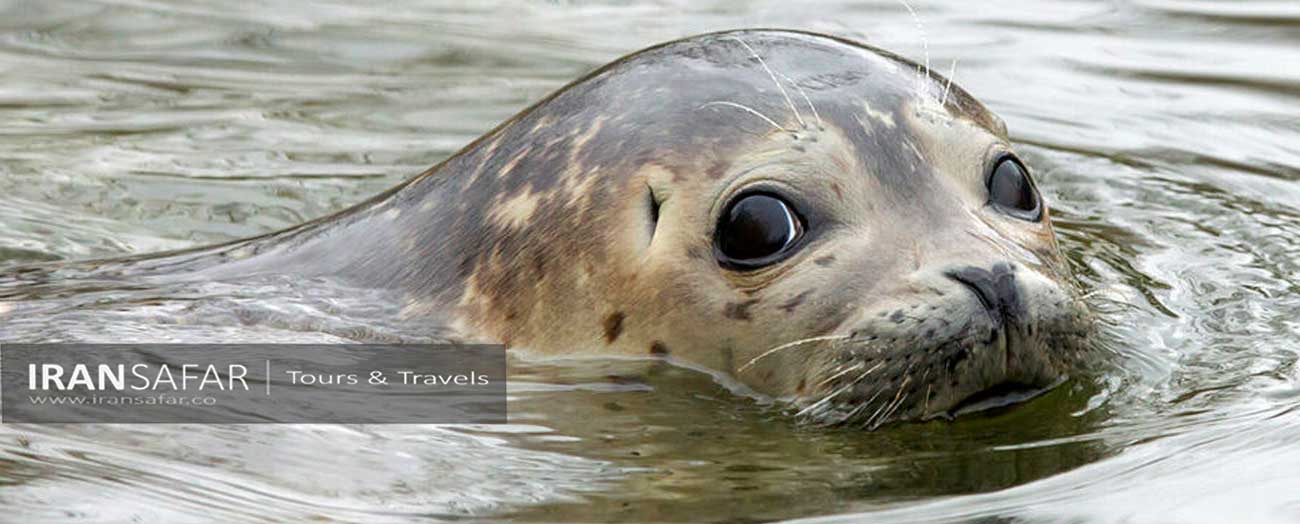
9There is no shark in the waters of the Caspian Sea, the water of this sea is ranked among the semi-saline waters and sharks live only in saline waters. 10After the Persian Gulf and Siberia, the Caspian Sea ranks third in terms of oil and gas reserves on the coast and under the bed. 11The Caspian Sea is below sea level.The altitude of the Caspian Sea is 26 to 28 meters below the sea level.
12About 130 rivers flow into this sea, most of which join the Caspian Sea from the northwest. The largest of these rivers is the Volga River
13Caspian coastline of Iran is the most touristic area of Iran.
14About 4% of the world’s oil and gas reserves exist in the Caspian Sea.
15In 1994, Azerbaijan signed an agreement with Russian companies, Norway, Britain, Turkey, Saudi Arabia and the United States to extract Caspian oil. In November 1994, they asked Iran to join the agreement, but the United States rescinded the agreement on the pretext that they could not have any common business with Iran. 16The Caspian Sea is a huge source of hydrocarbon fuels, most of which are in the Republic of Azerbaijan.
17 Annually, 122,000 tons of pollution from oil extraction enters Caspian waters.
18From 6380 km of Caspian coast, about 922 km from Astara to Atrak river belongs to Iran.
19The Caspian Sea is very important in terms of fishing and its sturgeon is world famous. About 300 tons of caviar are caught annually from these fish. About 90% of the world’s caviar is obtained from this sea.
20According to the Treaty of Turkmenchay, the right to have a navy in the Caspian Sea was taken away from the Iranians, but again in the Treaty of Friendship between Iran and Russia in 1921, this right was equated between Iran and the former Soviet Union.
Caspian attractions in Iran
The coastal area of the Caspian Sea is not limited to the sea and some famous forests such as Sisangan. The sights of northern Iran are much more than this and the northern provinces of Iran, namely Gilan, Mazandaran and Golestan have many attractions.
If you wish to expand your planned sightseeing area and get more acquainted with the sights of northern Iran, you will definitely experience a very beautiful trip; A journey that can surprise you with Iran’s natural attractions and historical sites at any moment.
What to visit in the Caspian region of Iran?
Caspian provinces of Iran are of the most popular tourist destinations in this country. The beautiful nature of the northern Iran includes lush forests, mountains, marsh lands, rivers and beautiful shores of the Caspian Sea. Travel to the beautiful nature of northern Iran is not limited to a particular season and you can travel to this beautiful region all year round. The three provinces of Mazandaran, Golestan and Gilan form northern Iran. In the continuation of this article from Iran Safar, we intend to introduce some cities and places of interest in this region:
Gonbad-e Kavus Tower
A UNESCO World Heritage Site since 2012, the historical tower of Gonbad-e Kavous or Gonbad Qabus tower or Mill Gonbad, located in Gonbad Kavous city in Golestan province of Iran, is the tallest brick tower in the world, which was built in 11th century AD. This building, according to the Kufi brick inscription around it, was built in 1106-7 AD and marks the grave of Ziyarid ruler Qaboos bin Voshmigir (r. 978–1012)
This tower is one of the most beautiful and magnificent buildings of the early Islamic period. It is a cylindrical tomb tower that reaches 61 m. and can be seen from some 30 Km (19 miles) away. Despite the use of very few decorative elements, Gonbad Tower has a well-proportioned, harmonious, strong and beautiful structure that induces a sense of glory and beauty to the viewer.
The city of Gonbad-e Kavus, now located near the city of ancient Jorjan was the capital of the Al-Ziyar rulers and is named after this monument.
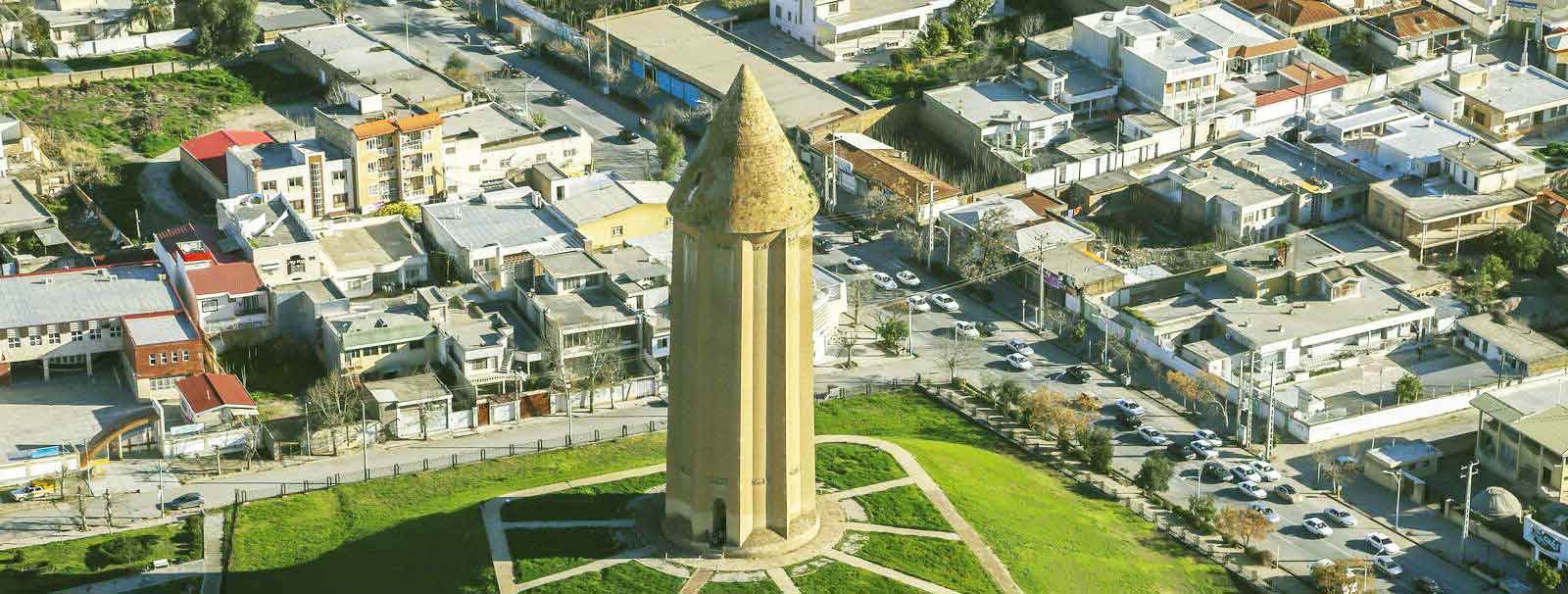
Rudkhan Castle
Dated from Sassanid era, the Rudkhan castle locally known as Ghal’eh Hesami or Ghal’eh Rudkhan, is located 20 Km from Fuman city, next to a village of the same name. Hidden in forests, it attracts numerous visitors who eagerly climb over 3000 steps uphill to reach this hidden place that is fortified with walls measuring 1500 meters long and 65 watch towers.
The castle is located at a height of 665 to 715 AMSL, next to a river of the same name.
For the first time in 1830, a Polish man discovered the fortress while recording the location of the monument in his notes. He writes about it: “I found a fortress on top of a Gilan mountains in the upper part of Rudkhan river, its roof is made of stone and on both sides of the entrance there are two strong defensive towers.” There is an engraved inscription above the main entrance mentioning that the castle was rebuilt for King Sultan Hussam al-Din Amir Aladin Ishaq.
Rudkhan Castle consists of two parts: Arg, where the ruler lived and also Barrack; the place where military activities took place. The Arg is a brick-made two-story structure which is on the west side of the castle. The barracks, on the east of the site, have also two floors with multiple windows and holes to monitor the soldiers. There is also a spring in the castle. The Watch Tower surrounds the fort around the castle. It is said that no enemy could break in or conquer this magnificent castle. Read more about Iran’s Famous Castles
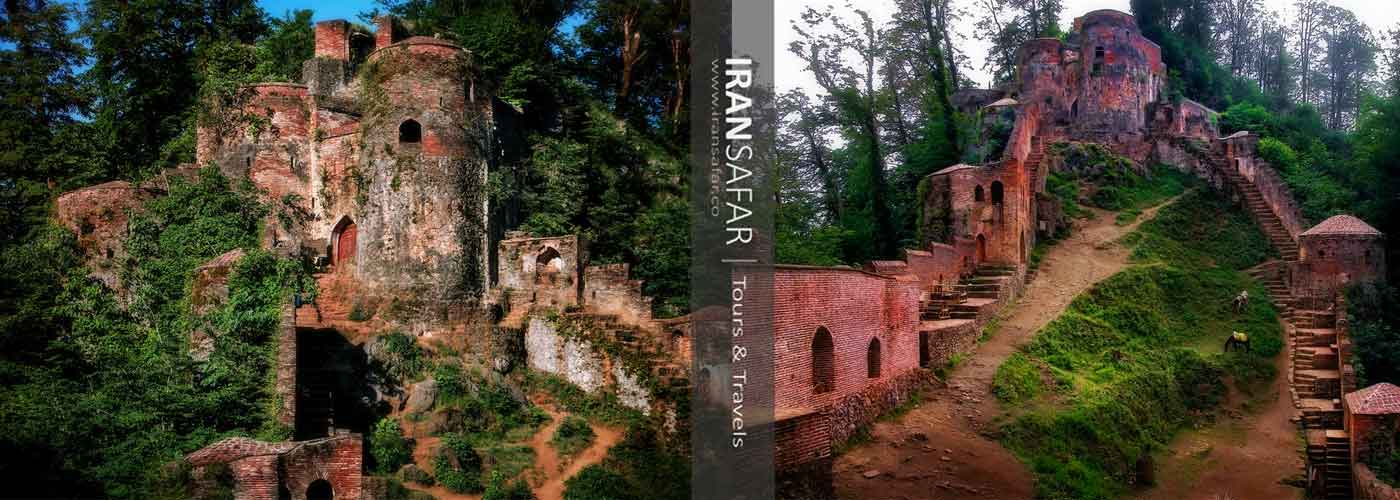
Badab-e Surt springs
For those interested in the geology world, the amazing rock formations of Badab-e Surt would be a spectacular attraction. Badab-e Surt springs are located in Mazandaran province, about 100 km south of Caspian sea. The formations caused by accumulated sediments of this spring are actually stairwells that turn golden, yellow, orange and red in color. Two of these springs are said to be potable and have healing properties. This is one of the places where photographers would love. Unfortunately, Badab Surt springs are being destroyed for a variety of reasons.
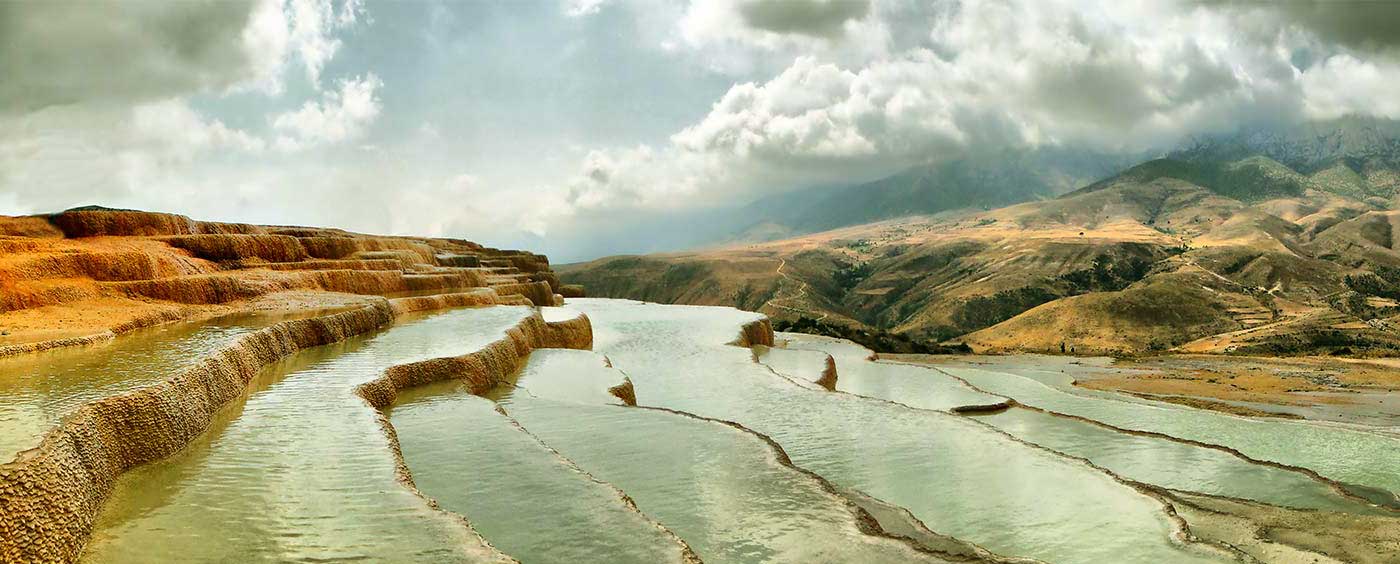
Laton Falls
Laton Waterfall is one of the natural masterpieces of Gilan province located in the heart of Espinas mountains. If travel to Gilan province, it’s worth to take a day trip to Astara city to enjoy watching the highest waterfall in Iran. Laton waterfall reaches a height of 105 meters and is also known as the tallest waterfall in Iran. To go to the Falls, you have to go 15 km south of Astara city, which is located on the border of Ardabil province, and follow the roads of Lundville city and Kote Komeh village. After this route, you should go for a a 4-hour trek, and walk in a beautiful forest trail where fatigue is meaningless. If you are looking for relaxation, camping in this quiet and peaceful place is recommended. If you are also an adventurer, you can experience rappelling Iran’s tallest waterfall. Remember that the best time to travel to this place is in the spring season (April-June)
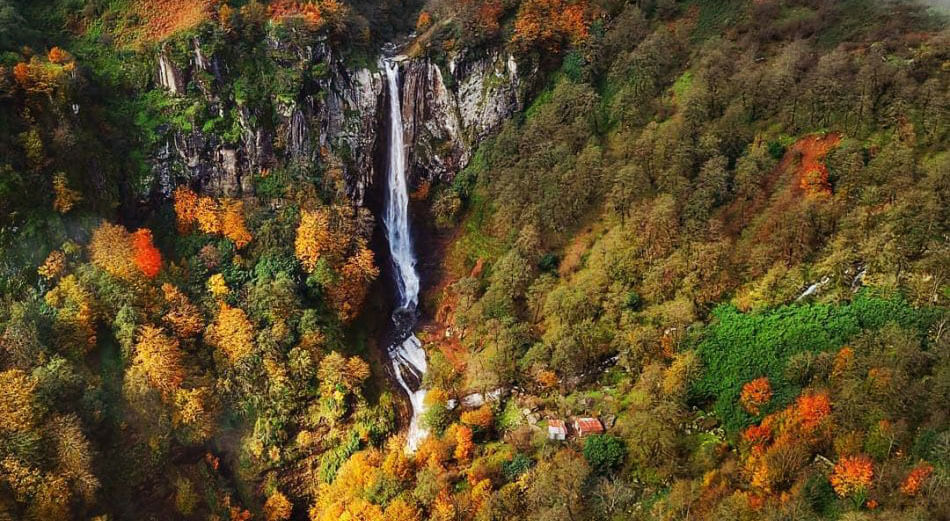
Masouleh Village
The stepped village of Masouleh is one of the most beautiful places in northern Iran. Good climate, the local cuisine, the hotels with interesting and beautiful architecture, and the tourist attractions of this village have made it a great tourist attraction. As one of the most important settlements in the region, Masouleh has gained an international reputation.
The architecture of present village was formed During “Zandieh” period (18th C); The roofs of each house on lower tiers is used as a courtyard for another house on the tiers above them. In some cases, public streets are laid out along interconnected roofs. The land in front of the house doors and the roofs of each house are both used as sidewalks. Narrow streets and numerous stairs don’t allow motor vehicles to pass.
10 most fascinating villages of Iran
Anzali Lagoon
Anzali port is one of the important and big cities of Gilan province, the first port in Iran on the Caspian Sea coast. That is why it is of great commercial and tourist importance. Anzali port with humid weather is one of the rainiest cities in Iran. Anzali Wetland or Anzali Lagoon is one of the largest lagoon in the world. A beautiful wetland full of reeds and lotus flowers that with its unique view welcomes many travelers.

Situated southwest of Bandar Anzali, this sweet water lagoon covers an area of 80 to 120 sq km (depending to season). 11 rivers and 30 tributaries empty into the lagoon after passing through the rice fields and farmlands along their course. The lagoon’s water depth is around 2.5 meters in spring.
Anzali Lagoon is home to seasonal Lotus flowers which are considered sacred in many Asian cultures. In many of the ancient Iranian historical sites such as Persepolis, or Apadana site in Susa, some carvings have been excavated with Lotus design. It is also a natural habitat for water lilies and duckweed.
Anzali Lagoon is also a refuge for local and migrant birds, some of which are at risk of extinction. It has over 100 bird, 50 fish and hundreds of plant species. This lagoon is also a suitable destination for bird watching in Iran appealing many nature lovers every year.
What birds live in Anzali lagoon?
kingfisher, curlew, greater spotted eagle, coot, garganey, moorhen, black kite, whooper swan, mute swan, tundra swan, sandpiper, mallard, pelican, flamingo, little bittern, purple heron, grey heron, great grebe, Caspian gull, greylag goose, western swamphen, red-crested pochard, red-breasted merganser, smew, common golden eye, hawk, Eurasian sparrowhawk, northern lapwing, little grebe, little cormorant, African darter, plover, tufted duck, ring-necked duck, common merganser, common linnet, trumpeter finch, little black cormorant, great egret, barn swallow, tit, starling, Eurasian magpie, green bee-eater, chough, hooded crow, common pheasant, cattle egret, sparrow, Eurasian wigeon, wagtail, red-breasted goose, warbler, white-headed duck, ferruginous duck, red-crested pochard, red-breasted merganser, smew, common golden eye, hawk, Eurasian sparrowhawk, northern lapwing, little grebe, little cormorant, African darter, plover, tufted duck, ring-necked duck, common merganser, common linnet, trumpeter finch and wren.

Municipality Square of Rasht, located in the city center, is one of the interesting squares in Iran. This square is one of the main parts of Gilan province with its historical monuments, urban buildings, very important streets, old and new shopping centers around it. Many citizens of Rasht and even travelers who come to Rasht visit Municipality Square for shopping, eating and walking.
What to eat in Iran’s Caspian region?
One of the main destinations of Iran is the northern cities of the country- cities with delicious food in addition to unique attractions!
Food is one of the symbols that well reflects the culture of each region. In northern Iran, creative people with the healthiest and best ingredients have created appetizing and delicious dishes. Caspian region of Iran is a leader in delicious Iranian food with wonderful tastes. The types of vegetables and flavorings that exist in North Iran are the main reason for the good taste of local foods. Here are just some names:
Baghala Ghatogh, Mirza Ghasemi, Stuffed fish, Torshi Tareh, Aloo Mosama, Anarbij, Stuffed Chicken, Nardoon stew, Kadoo Bareh, Vavishka (Bij Bij)
If you wish to learn about Caspian Cuisine, please read about it here


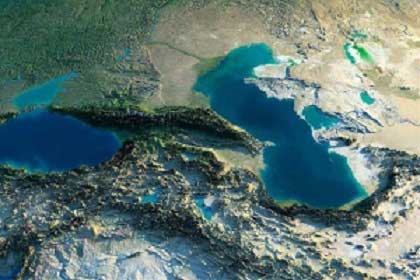





Comment (0)